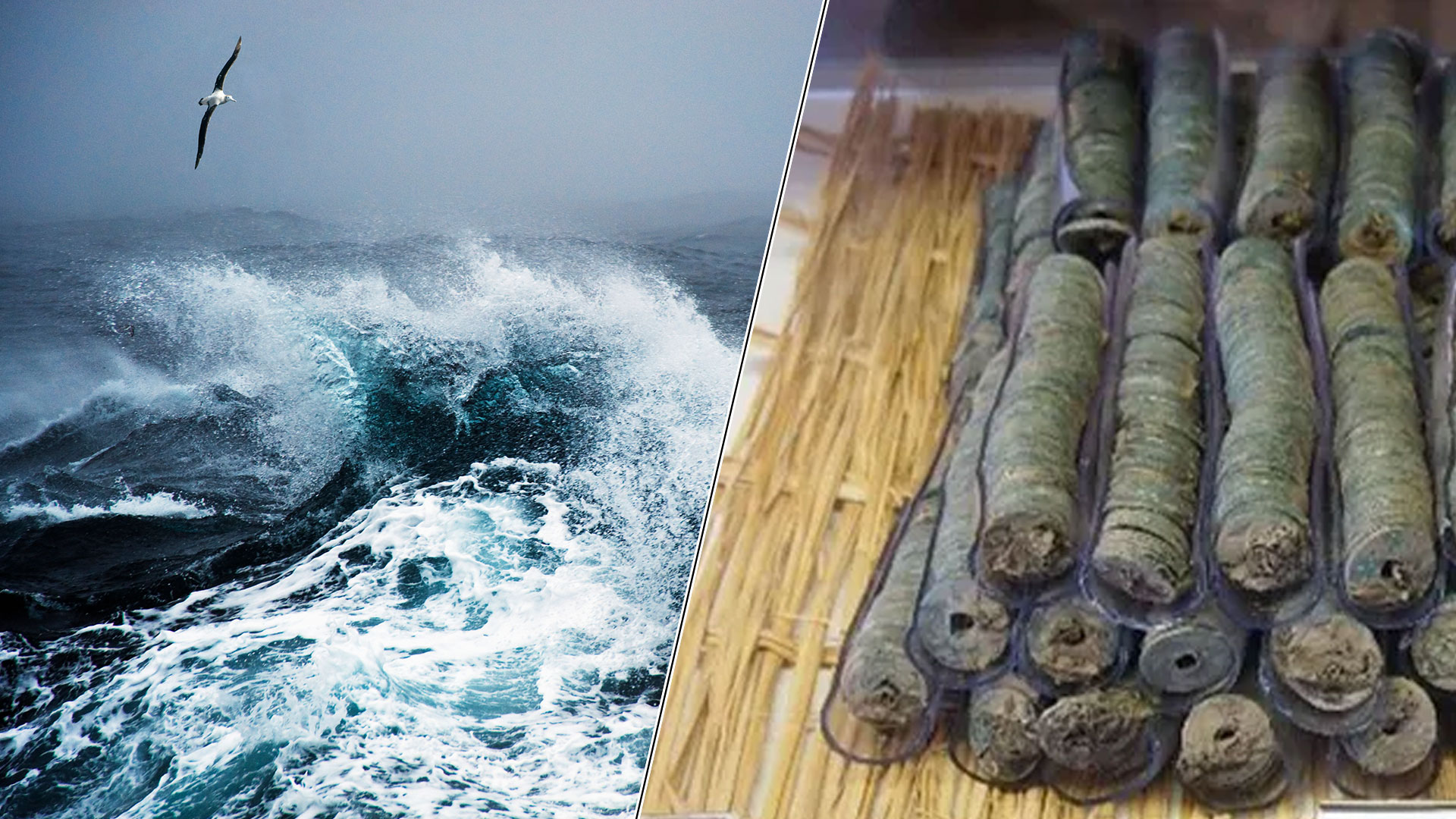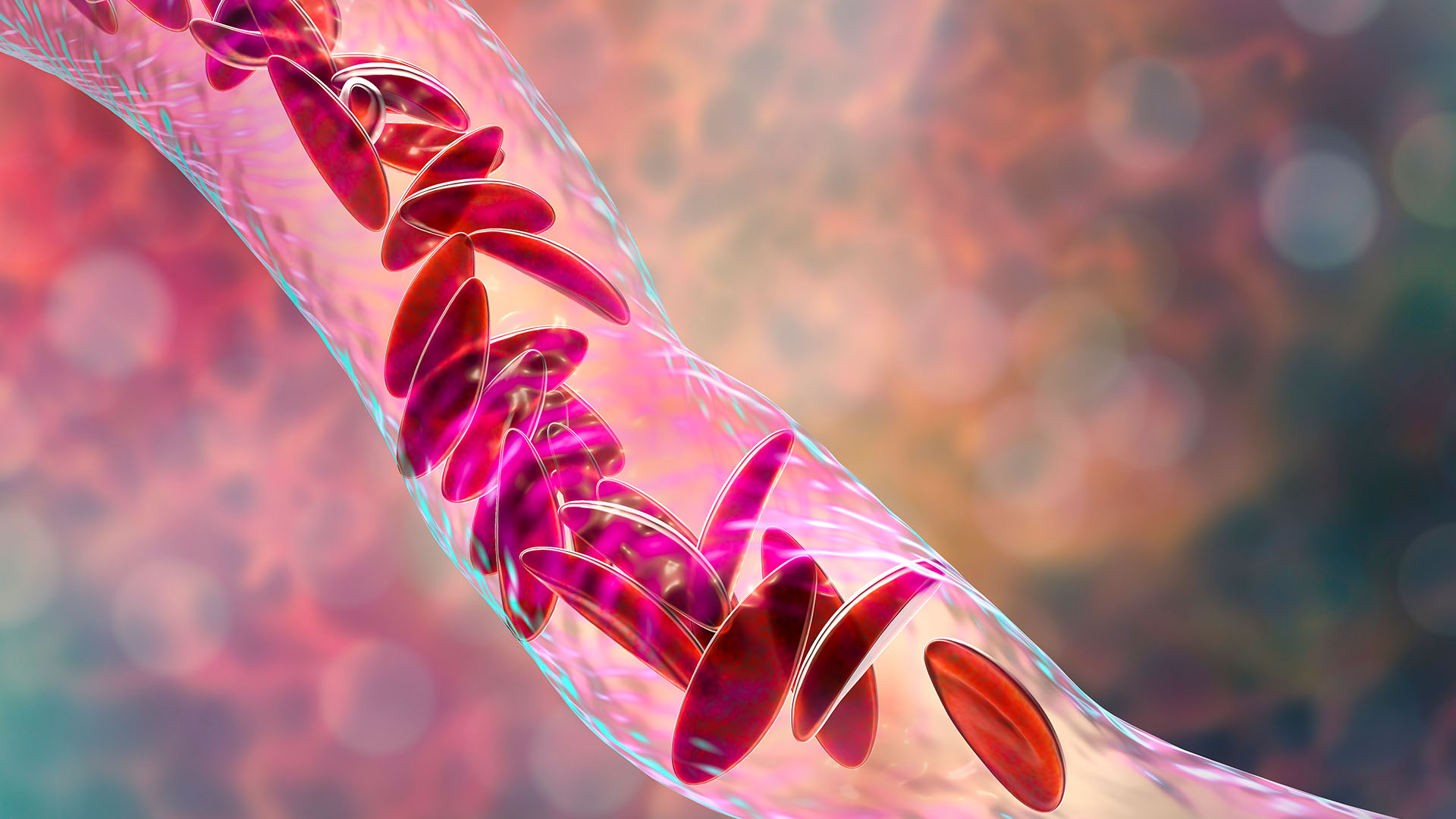
This week in science news, researchers discovered a "missing" blob of water in the Atlantic Ocean, unearthed an enormous haul of centuries-old coins in Japan and found out why a species of bat has a weirdly big penis.
Our top story was the unsurprising discovery of water in the Atlantic Ocean. That is, perhaps, a glib way to describe it, but finding a gigantic body of water stretching from the tip of Brazil to the Gulf of Guinea, near West Africa, solves a mystery scientists have been trying to work out since 1942.
Also under the ocean, scientists found a seamount off Guatemala that is twice the size of the Burj Khalifa, the world's tallest building. Researchers also found that a water leak in Earth's mantle may have birthed a mysterious layer that churns out crystals.
While we're talking all things aquatic, the animal kingdom heralded a few delights from under the waves this week, including great white sharks that hang out in the twilight zone, a huge mammoth jaw dredged from a Florida riverbed and rare footage of mini mola swimming together off Canada's Pacific coast.
While it wasn't all water-related news this week (for example, there was the news that 19th-century earthquake aftershocks are still hitting us, and that our star has a "sunspot archipelago"), we will round out this soggy section with this electric flying passenger ship, which could "revolutionize how we travel on water."
In archaeology, new discoveries were unearthed across the world. First it was the stunning hoard of more than 100,000 coins found in Japan, which might have been buried by warriors centuries ago. Then we set sail for Punt, a mysterious port city that thanks to some baboon mummy DNA, researchers now suspect was in modern-day Eritrea, Africa. DNA also revealed that Indigenous people in what is now Mexico migrated to California 5,200 years ago and likely brought their languages with them.
The James Webb Space Telescope once again provided the biggest space news of the week, finding a "cosmic vine" of 20 connected galaxies sprawling through the early universe, as well as a cosmic "peanut" and "fluff ball" that are two of the four oldest galaxies in the known universe. There's also news that the "devil comet" appears less spooky now as it has lost its iconic horns.
With Thanksgiving behind us, we can start looking toward the next holiday season, and that means a few of us will likely be indulging in a glug of red wine — but why do some people get the dreaded "red wine headache?"
And finally, male serotine bats have a rather unusual appendage — a "disproportionately large" penis, seven times longer and wider than their female counterparts' vaginas. That can make mating understandably difficult — we'll let the experts explain how that works.
Follow Live Science on social media
Want more science news? Follow our Live Science WhatsApp Channel for the latest discoveries as they happen. It's the best way to get our expert reporting on the go, but if you don't use WhatsApp we're also on Facebook, X (formerly Twitter), Flipboard, Instagram, TikTok and LinkedIn.
Picture of the week

This dazzling landscape of twinkling lights may be one of the most colorful views of the universe ever seen.
NASA astronomers created the image by combining observations of a single galaxy cluster taken by the agency's two premier telescopes: The James Webb Space Telescope (JWST) and Hubble Space Telescope. Brighter, bluer light sources are primarily galaxies seen by Hubble's visible light instruments, while duller, redder galaxies are the product of JWST's infrared detectors, which peered through clouds of cosmic dust to sense the waning heat of ancient galaxies that have slowed down their star formation. NASA likens the resulting image to a cosmic 'Christmas tree' wrapped in twinkling lights and hinting at untold wonders soon to be unveiled.
Sunday reading
- How long is a second? Seems obvious, right?
- The Hercules beetle — mighty by name and by nature.
- Did you get what you needed (or wanted) this Black Friday? If you still have some dollars to spend, why not check out our roundup of the best telescopes and binoculars and fitness tracker deals.
- How and when to see this week's Beaver Moon.
- Why does Australia have so many venomous animals?
- There's nothing like a Thanksgiving meal to loosen the belt buckle, but does it really take 20 minutes to realize you're full?
- There are infinitely many prime numbers, but this is the biggest we know of.
- If Alexander the Great had invaded Rome, would he have won?
Live Science long read

The world's first treatment that uses CRISPR gene-editing technology has been approved. Exa-cel, also known by its brand name Casgevy, received its first regulatory approval on Nov. 16,from the U.K. Medicines and Healthcare products Regulatory Agency (MHRA) to treat two debilitating blood disorders: sickle cell disease and transfusion-dependent beta-thalassemia. Advisors to the U.S. Food and Drug Administration (FDA), meanwhile, determined that the drug was safe for clinical use in late October, and the FDA is expected to rule on whether to approve the treatment by December.
The MHRA's historic decision to approve Casgevy may signal the start of a new era of gene therapy. However, questions remain surrounding the treatment's affordability and its long-term safety. Here's what we know so far about Casgevy.







